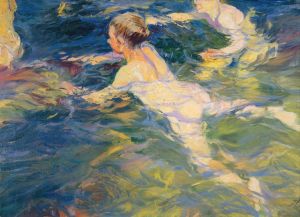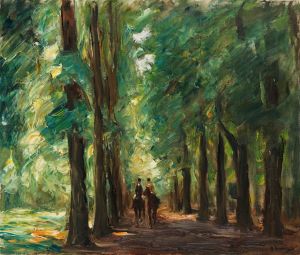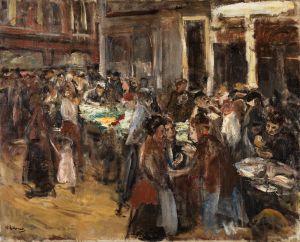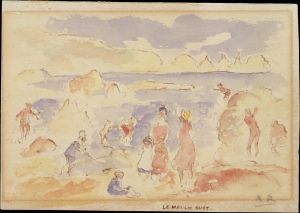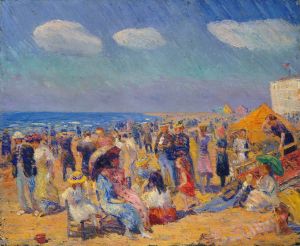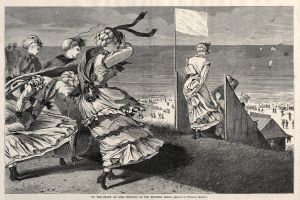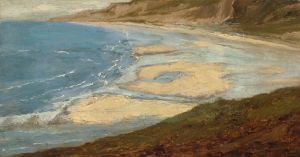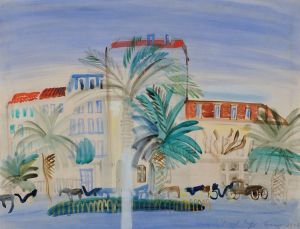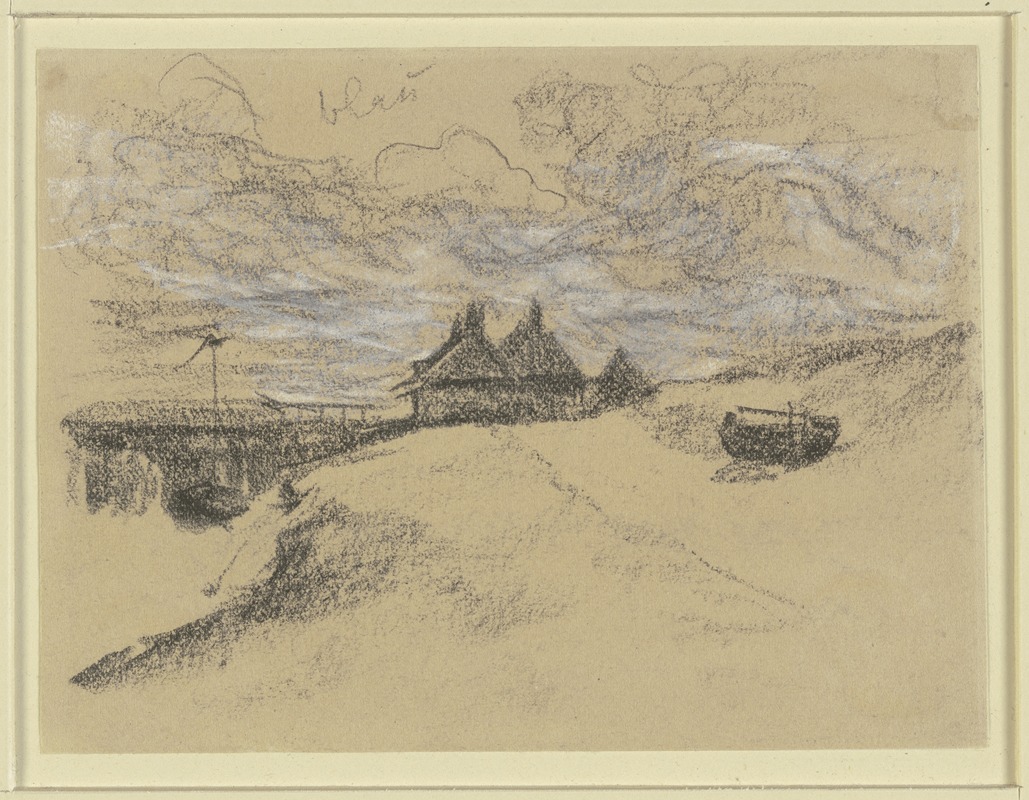
Blick von der Düne auf den Strand
A hand-painted replica of Max Liebermann’s masterpiece Blick von der Düne auf den Strand, meticulously crafted by professional artists to capture the true essence of the original. Each piece is created with museum-quality canvas and rare mineral pigments, carefully painted by experienced artists with delicate brushstrokes and rich, layered colors to perfectly recreate the texture of the original artwork. Unlike machine-printed reproductions, this hand-painted version brings the painting to life, infused with the artist’s emotions and skill in every stroke. Whether for personal collection or home decoration, it instantly elevates the artistic atmosphere of any space.
Max Liebermann was a prominent German painter and printmaker, associated with the Impressionist movement. His painting "Blick von der Düne auf den Strand" (View from the Dune to the Beach) is a notable work that exemplifies his mature style, characterized by loose brushwork and a keen interest in capturing the effects of light and atmosphere.
"Blick von der Düne auf den Strand" was created during a period when Liebermann frequently visited the coastal areas of the Netherlands and northern Germany. These visits were a significant source of inspiration for him, as he was captivated by the natural landscapes and the everyday life of people in these regions. The painting reflects Liebermann's fascination with the interplay of light and shadow, as well as his ability to convey a sense of movement and vitality in his depiction of the beach scene.
The composition of the painting is carefully structured, with the dune in the foreground providing a natural frame for the view of the beach and the sea beyond. Liebermann's use of color is subtle yet effective, with a palette that captures the muted tones of the sandy dunes and the shimmering blues of the sea. The figures on the beach are rendered with a sense of immediacy and spontaneity, typical of Liebermann's impressionistic approach. They are depicted engaging in various activities, such as walking, playing, or simply enjoying the seaside, which adds a lively and dynamic element to the scene.
Liebermann's technique in this painting demonstrates his mastery of capturing the transient effects of light. The way he handles the paint, with swift, fluid brushstrokes, creates a sense of movement and captures the changing atmosphere of the beach. This approach aligns with the broader Impressionist movement, which sought to depict the fleeting moments of everyday life and the changing qualities of light.
Throughout his career, Liebermann was influenced by the works of other Impressionist painters, such as Édouard Manet and Edgar Degas, and he incorporated elements of their techniques into his own work. However, he also maintained a distinct style that was uniquely his own, characterized by a focus on realism and a deep appreciation for the natural world.
"Blick von der Düne auf den Strand" is an excellent example of Liebermann's ability to blend realism with impressionistic techniques, resulting in a work that is both evocative and grounded in the observation of nature. The painting reflects his interest in capturing the essence of a moment and his skill in conveying the beauty of the natural environment.
Max Liebermann's contributions to art extend beyond his paintings; he was also a significant figure in the art community, serving as the president of the Berlin Secession and later the Prussian Academy of Arts. His work, including "Blick von der Düne auf den Strand," continues to be celebrated for its technical excellence and its ability to capture the spirit of the time and place it depicts.





